Knee Replacements
Replacement knee surgery can help patients whose knee(s) have degenerated due to osteoarthritis, rheumatoid arthritis, post-traumatic arthritis, or when an injury has damaged the knee. When the articular cartilage of the knee becomes damaged or worn, it becomes painful and the knee is hard to move. Instead of sliding over each other, the bones rub and crush together.
Want to get prepared before the procedure? Check out these prehab exercises to help improve your recovery outcome!
A day after the procedure, your doctor will encourage you to get out of bed and try to walk, usually with some kind of walking aid. To significantly reduce the risk of future complications, physical therapy will have you perform exercises to promote proper mobility. Talk to your PT and check out our exercise suggestions below!
Tips to a Speedy and Successful Rehabilitation
- Apply ice for 10 –15 minutes to the operated knee after exercise. Using cold therapy while elevating the leg above your heart helps reduce swelling
- Beginning 3-4 days after surgery, you can also apply heat under the knee or to the thigh muscle well above the incision for 10-15 minutes before you exercise
- Short arc quad exercise helps improve strength and range of motion in the knee. Lie on your back with your legs extended and the knee supported by a rolled towel or foam roller. Keeping the knee on the roller, straighten the operated leg at the knee by lifting the heel off the floor. Hold for 5 seconds, then slowly lower the heel back down
As you recover in the hospital, a physical therapist will most likely teach you exercises to help strengthen your knee. Most often, you can begin these exercises the day after your operation. It is highly recommended you stretch and exercise daily to help avoid complications or dislocation of your new joint.
7 Exercises to Help Increase Knee Motion and Strength
Once you are fully recovered from knee replacement surgery, it is important that you continue with an exercise program. A physical therapist will personalize a knee rehabilitation program to help you reach certain goals. Don’t start a new exercise program without your doctor’s approval.
We’ve come up with 7 helpful exercises that promote safety, build strength, and increase range of motion that you can practice at-home after a knee replacement surgery.
Knee Flexion (Prone Position)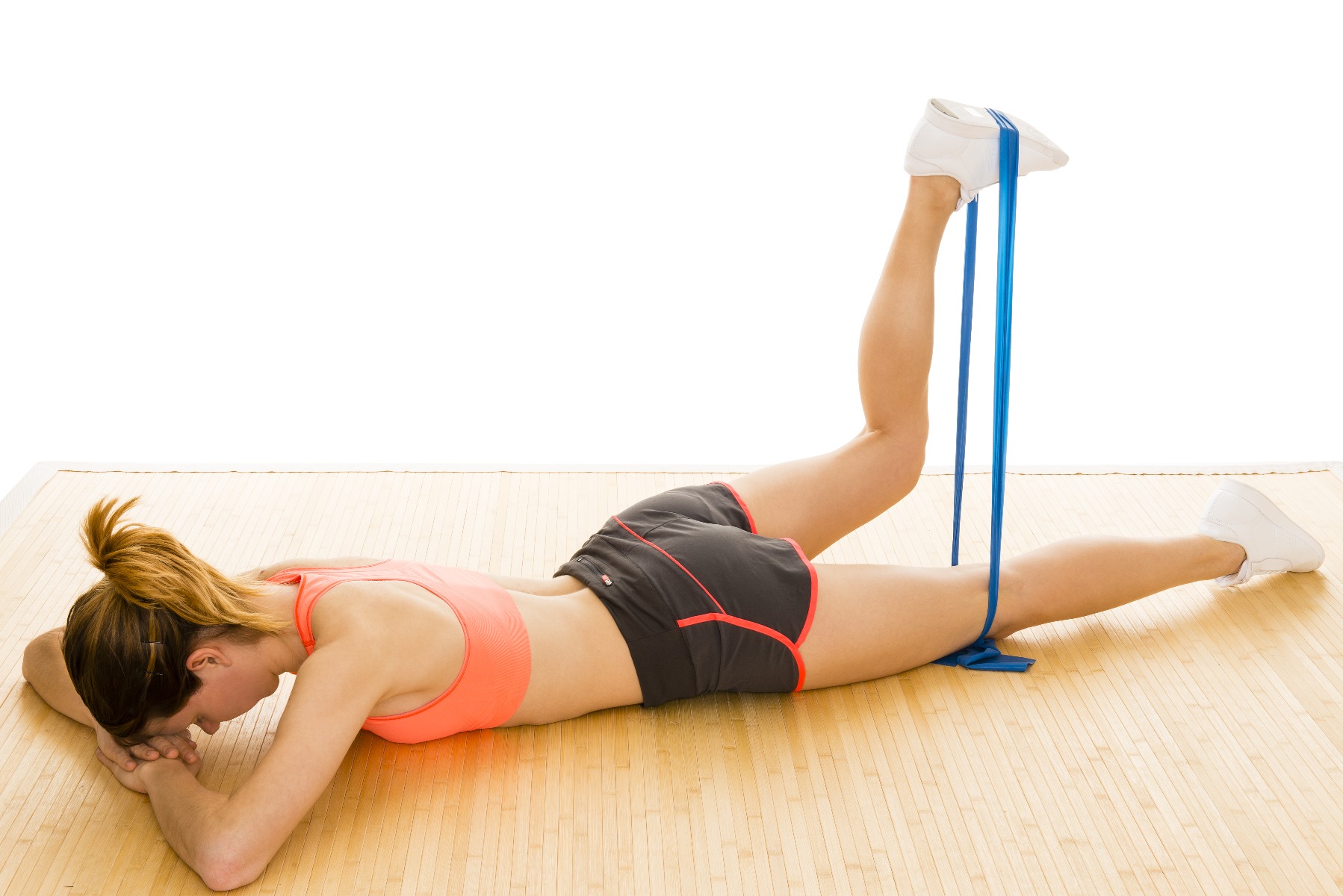
|
|
Step 1: Securely attach one end of the loop band near the floor
Step 2: Lay on your stomach and place the other end of the loop around your ankle
Step 3: Begin with your knee straight and flex (bend) your knee against the band
Step 4: Hold and slowly return |
|
Seated Knee Extension with CLX Band |
|
Step 1: Sit in a chair with a resistance band around one of the chair’s legs and an ankle on the same side as the chair
Step 2: Slowly lift your leg until it’s about ⅔ straight
Step 3: Hold for five seconds, then slowly return |
|
Knee Leg Press (Supine)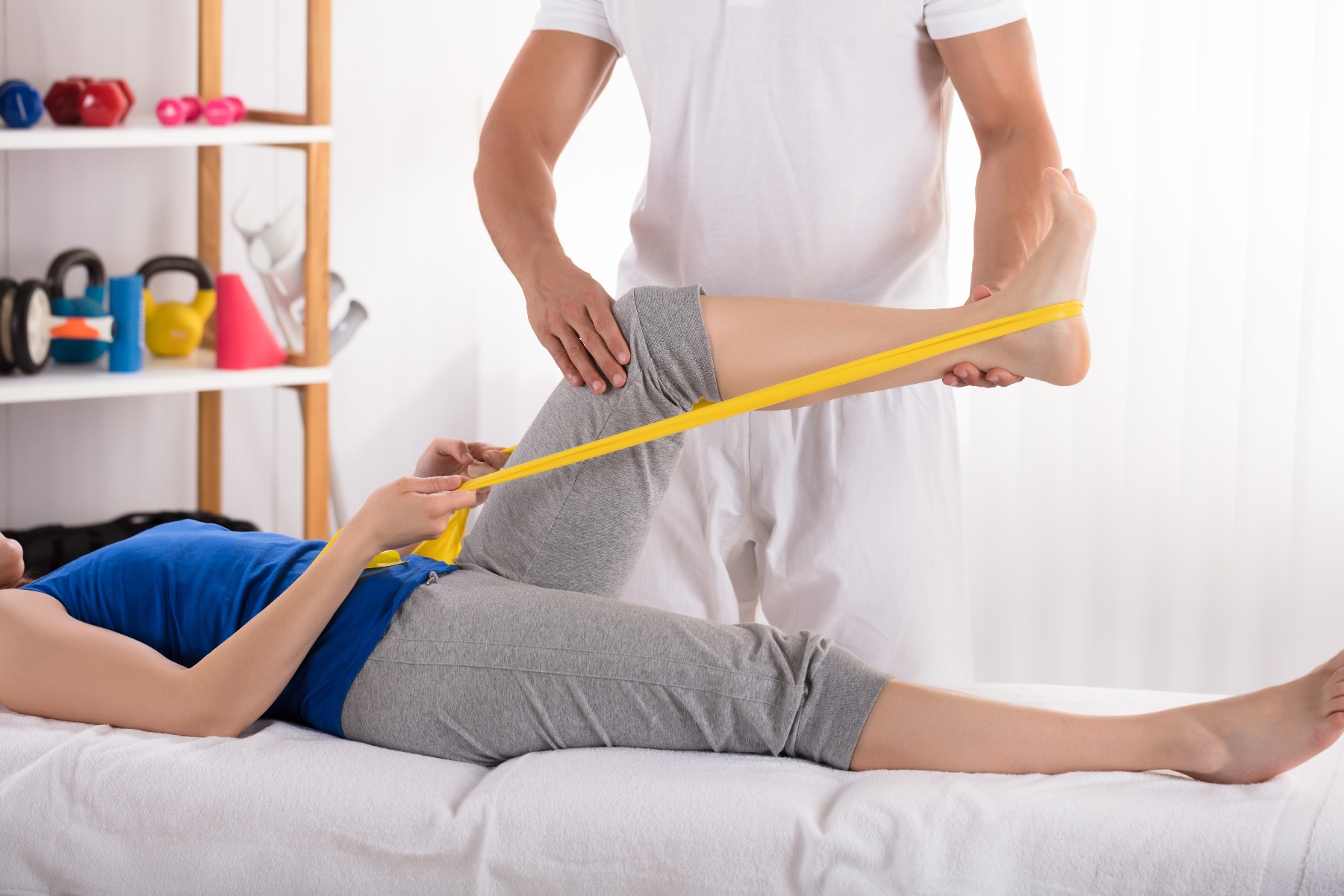
|
|
Step 1: Lay on your back with your knee bent and middle of band looped around the bottom of the foot
Step 2: Grasp the ends of the band in each hand near your shoulders
Step 3: Extend your hip and knee against the band until straight
Step 4: Hold and slowly return
Remember to maintain tension on the band by keeping your hands near your shoulders |
|
|
|
Step 1: Stand beside a chair, with a hand on the back of it for balance
Step 2: Place a resistance band around both ankles
Step 3: Keeping your shoulders and hips facing forward, lift one leg straight out sideways
Tip: Lead with your heel and keep the knee and toes pointing straight ahead
Step 4: Hold for five seconds, then slowly return |
|
Knee Squat with Resistance Tubing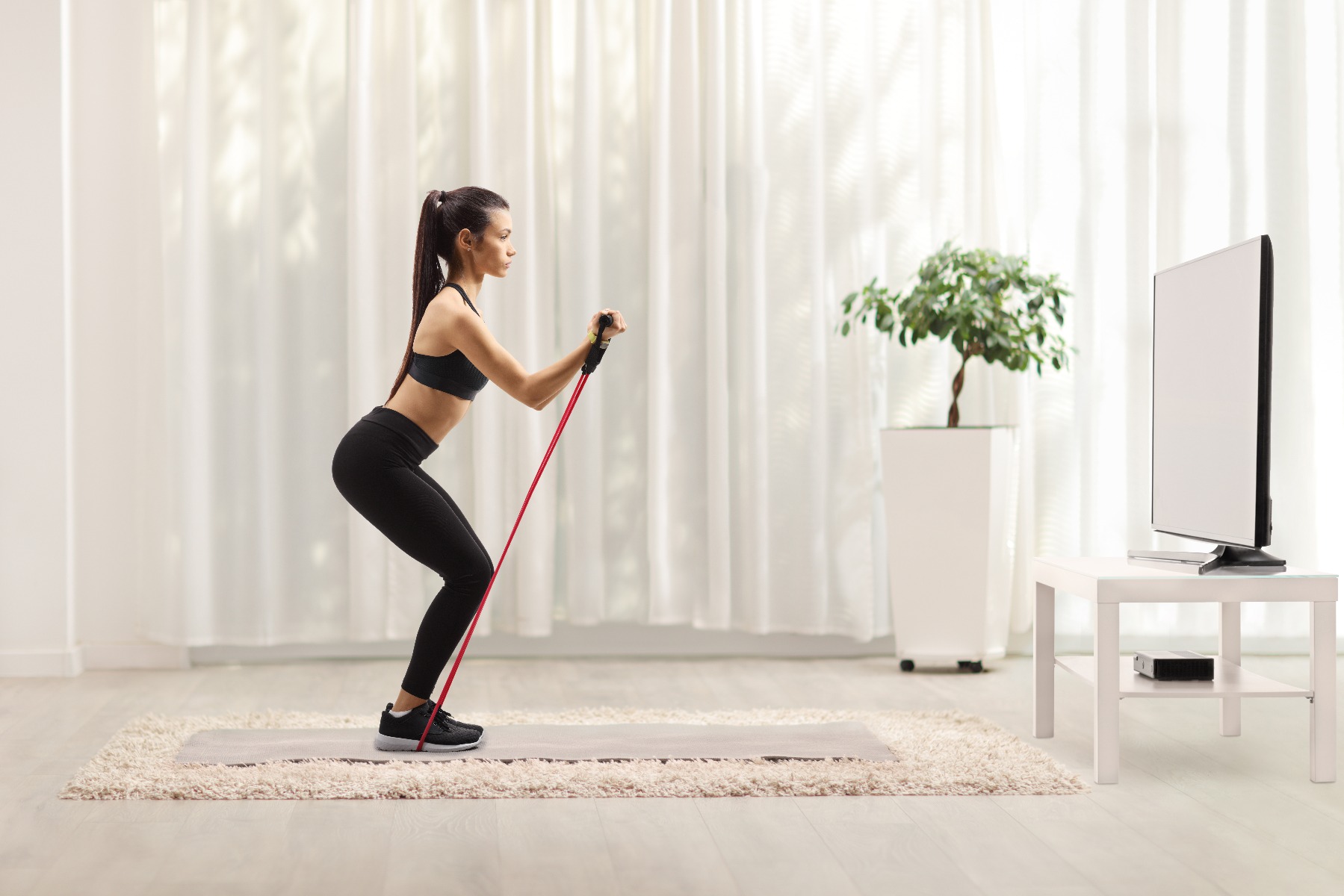
|
|
Step 1: Stand on the middle of the resistance tubing with both feet
Step 2: Grasp the ends of the tubing at hip level
Step 3: Slowly lower into a squat position, keeping the back and elbows straight
Step 4: Hold and slowly return
Remember to keep your back straight and knees pointing forward. Don’t allow your knees to rotate inward or outward |
|
|
|
Step 1: Stand with loop band around both thighs, just above the knee
Tip: Make sure the band is tight enough that you feel some tension when your ankles are slightly separated
Step 2: With a slight bend in both knees, step sideways to the right with one foot so that you’re standing with feet wide apart
Step 3: Step your other foot to meet the first one, keeping your feet pointing forward the entire time
Step 4: Continue to walk sideways until you’ve taken 10 steps, then reverse and walk sideways to the left |
|
Lunge with Resistance Tubing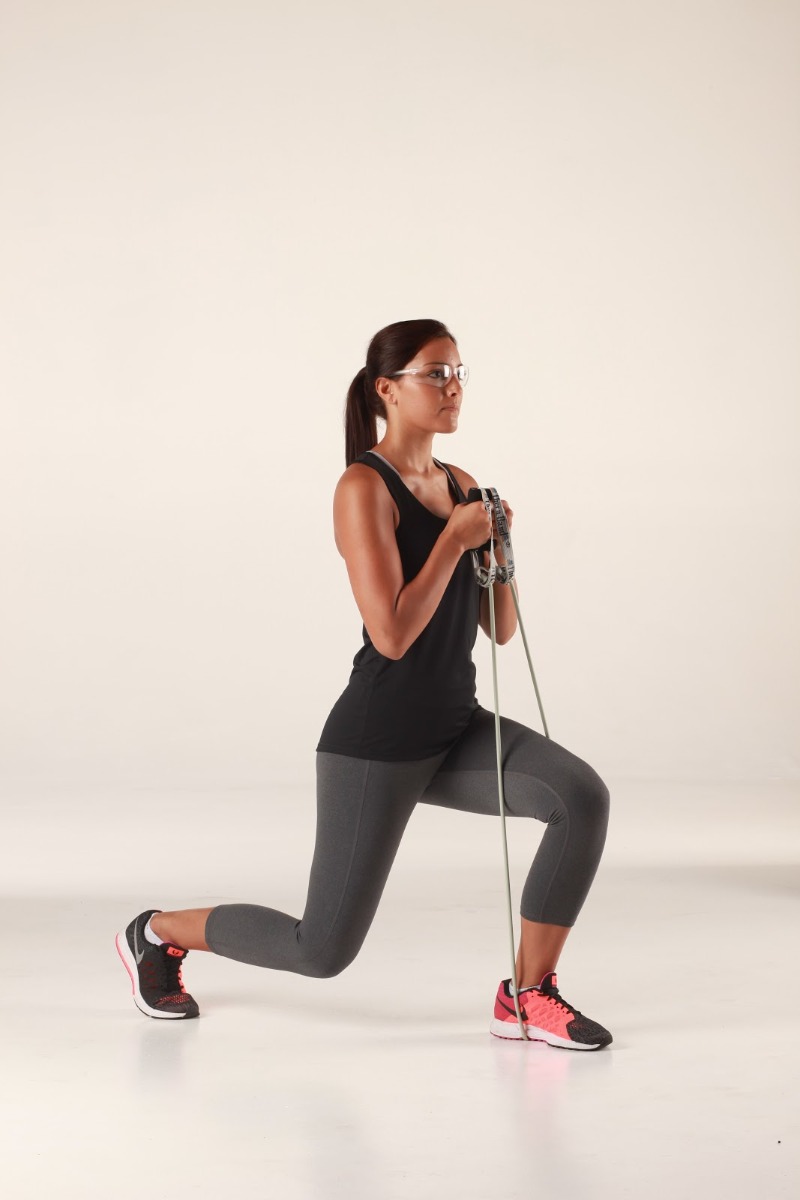
|
|
Step 1: Stand with one foot on the middle of the resistance tubing resistance tubing
Step 2: Grasp the ends of the tubing and hold at chest level with elbows bent
Step 3: Place the other leg behind you with the knee slightly bent
Step 4: Keeping your trunk upright, bend your front knee, lowering the body straight down
Step 5: Return to the upright position against the tubing
Remember to keep your back straight and avoid rounding your back |
|
More Information
It is important that adequate support and protection is provided for the affected knee post surgery to ensure a smooth recovery process. High-quality knee supports or braces with medical-grade compression help target postoperative symptoms and instabilities following a knee replacement surgery.
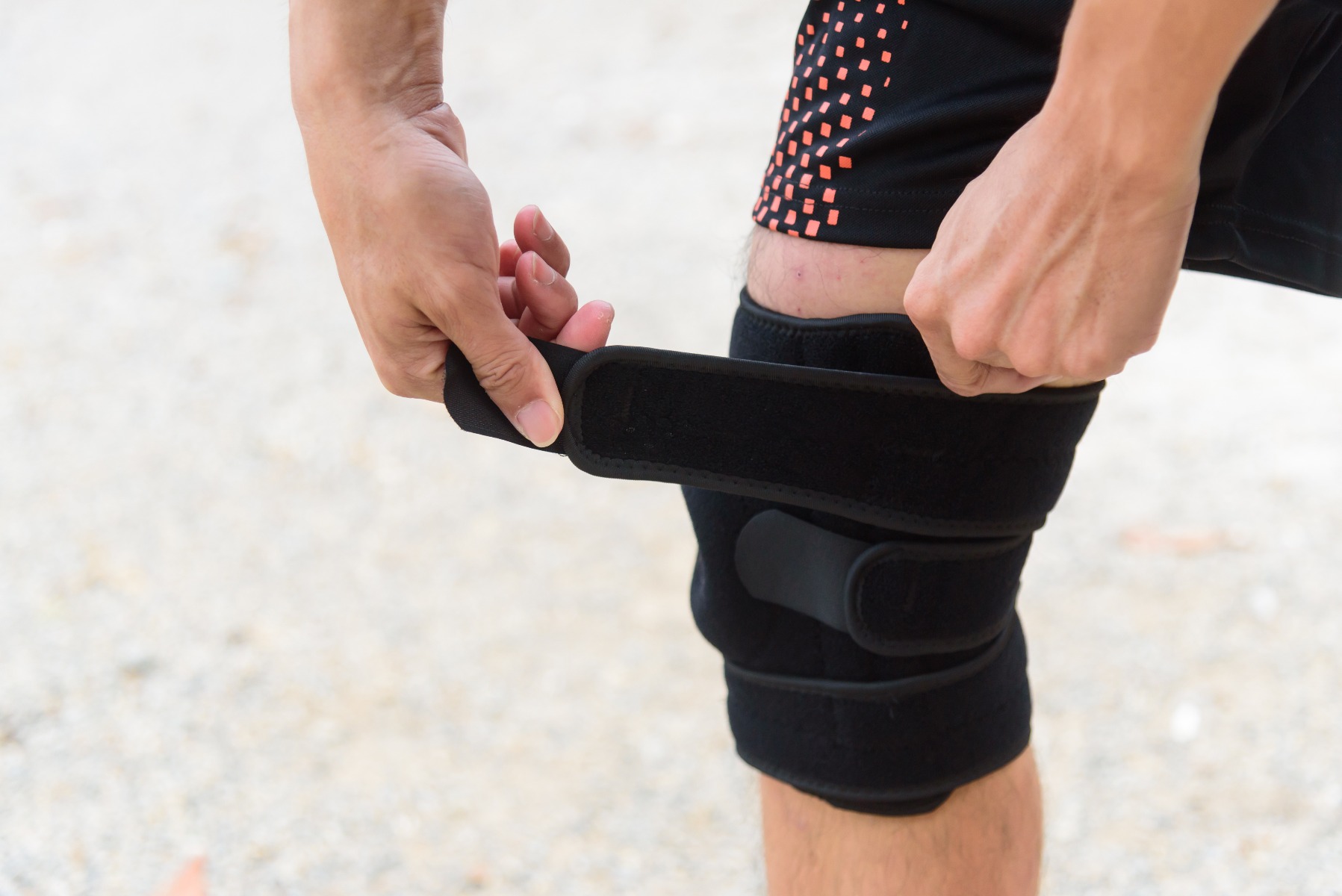
Standing, sitting, and moving from room to room may be increasingly strenuous after knee replacement surgery. It can disrupt your personal hygiene routine, making it difficult to bathe or get dressed independently. Proper preparation can help you successfully recover after knee replacement surgery.
To learn more about how to prepare for your surgery, find out what daily living aids you should buy before your knee replacement!
References
Anonymous. (2009). Knee Replacement Exercise Booklet. Sunnybrook Holland Orthopedic and Arthritic Centre. Retrieved from https://bit.ly/2DdBLMD
Foran, Jared. (2017). Total Knee Replacement Exercise Guide. American Academy of Orthopaedic Surgeons. Retrieved from https://bit.ly/31koKbT
Hiss, Kimberly. (2019). Knee Replacement Surgery Recovery: What Doctors and Patients Want You to Know. Creaky Joints. Retrieved from https://bit.ly/2XufEsb
Medical Disclaimer: The information provided on this site, including text, graphics, images and other material, are for informational purposes only and are not intended to substitute for professional medical advice, diagnosis or treatment. Always seek the advice of your physician or other healthcare professional with any questions or concerns you may have regarding your condition.









 France
France Australia
Australia






